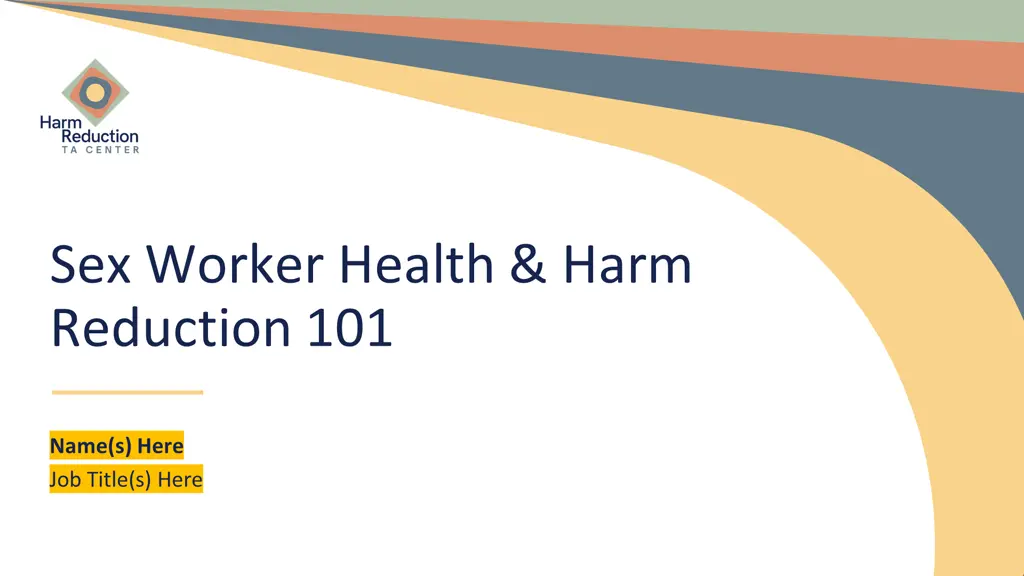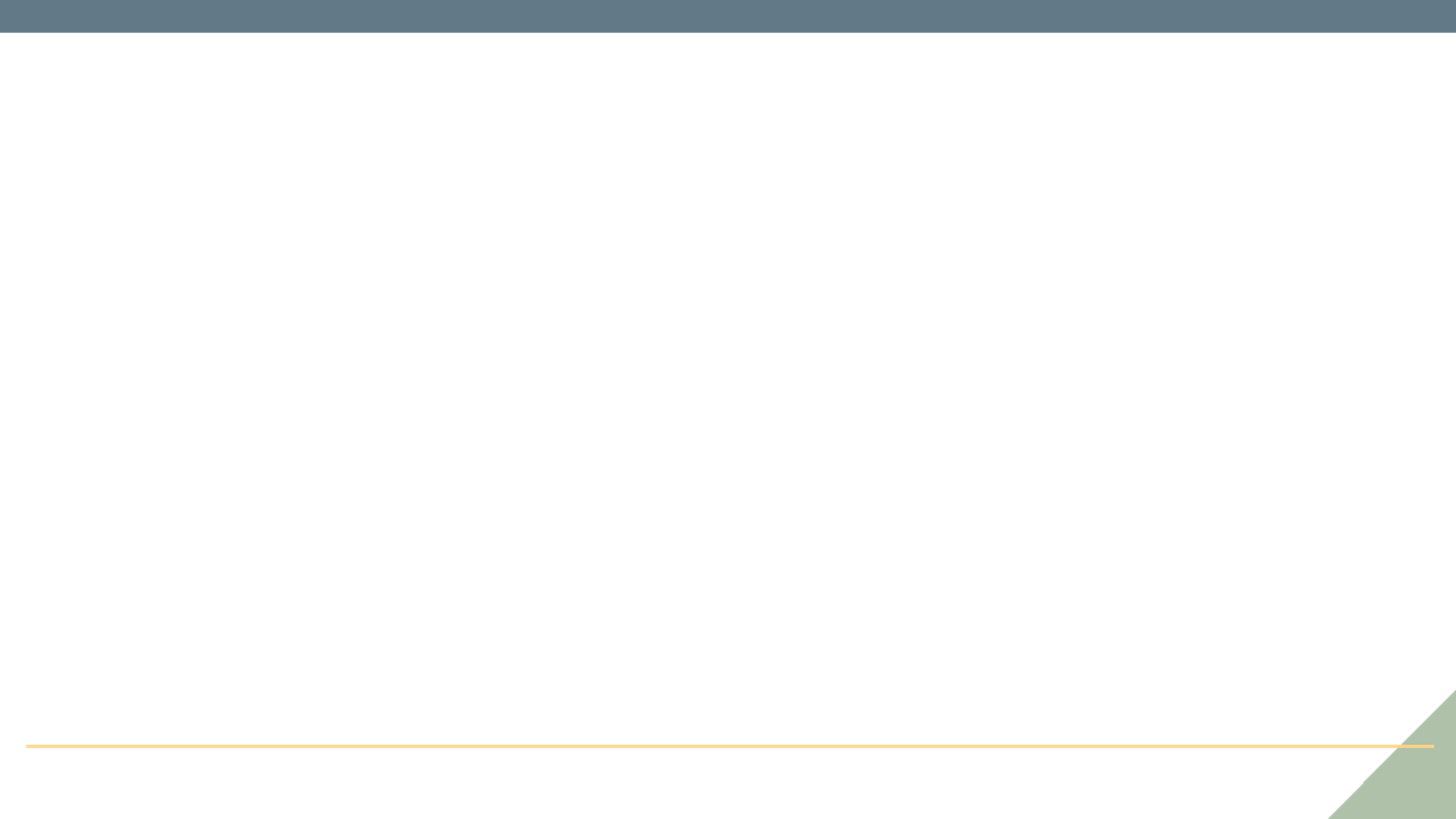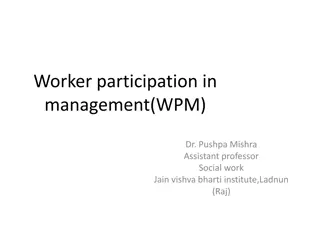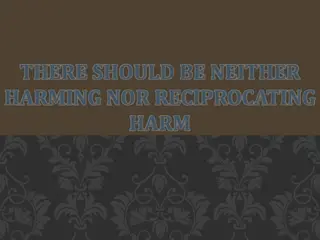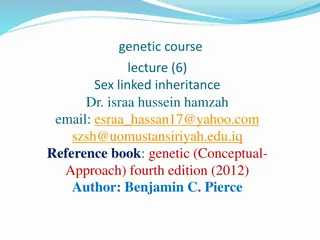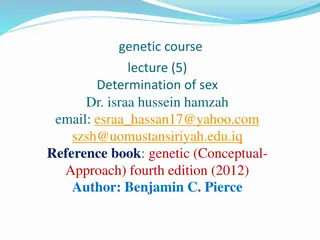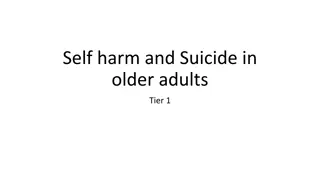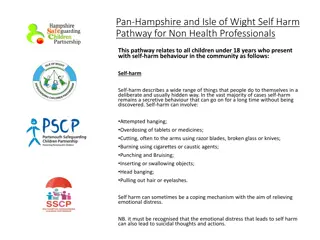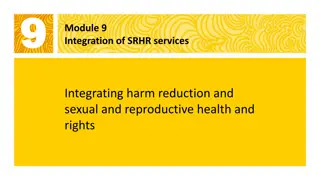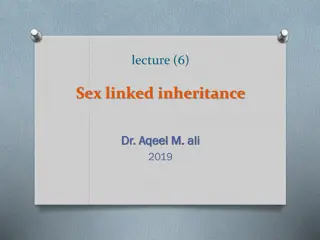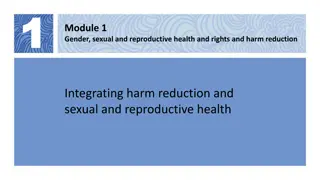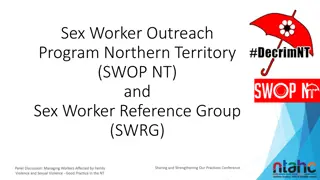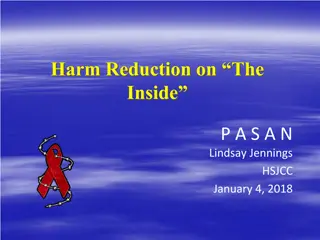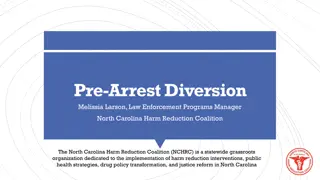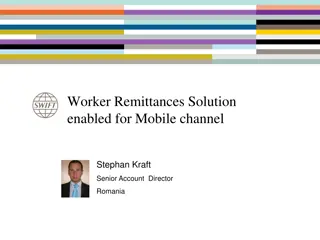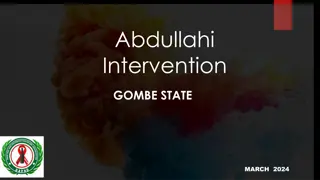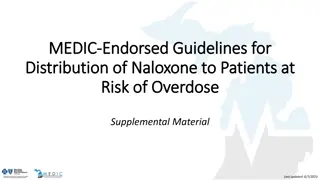Sex Worker Health & Harm Reduction 101
Barriers to care and stigma faced by sex workers. It offers insights on addressing trafficking, stigma, and promoting harm reduction. Explore narratives and sources shaping perceptions.
Download Presentation

Please find below an Image/Link to download the presentation.
The content on the website is provided AS IS for your information and personal use only. It may not be sold, licensed, or shared on other websites without obtaining consent from the author.If you encounter any issues during the download, it is possible that the publisher has removed the file from their server.
You are allowed to download the files provided on this website for personal or commercial use, subject to the condition that they are used lawfully. All files are the property of their respective owners.
The content on the website is provided AS IS for your information and personal use only. It may not be sold, licensed, or shared on other websites without obtaining consent from the author.
E N D
Presentation Transcript
Sex Worker Health & Harm Reduction 101 Name(s) Here Job Title(s) Here
Agenda 1. Introductions and Logistics 2. Examining What We Bring in 3. Why Does It Matter? 4. Language and Definitions Break! at X:00 1. Barriers to Care 2. Close 2
Logistics: Group Agreements Make Space, Take Space Speak from the I No one knows everything, but together we know a lot We can t use perfect language all the time Be aware of jargon and acronyms Be curious ELMO Take care of your needs, including stepping away Facilitator: How do you want people to ask questions? Do you want people to be off/on camera? 3
Objectives We will not cover: Today we will walk away with: A comprehensive or detailed discussion of medical or harm reduction needs for people who trade sex An overview of what sex work is and who participants in the sex trades Identified barriers to care for people who trade sex A working knowledge of trafficking in persons Ideas on how to address anti-sex worker stigma in our practices Legal or financial information for people who trade sex Places to look for more information Youth who trade sex 4
What Comes to Mind When You Hear Sex Work Think about the words, narratives, images and details that come to mind when you hear the term Street Work Prostitute Trafficking Victim Survivor 5
Where do we get these narratives? Media (Fictional stories, News, Movies, Television, Social media) Colleagues and Organizations Politicians, Lawmakers and Advocacy Campaigns Church and Religious Institutions Friends, Family and Peers Lived Experience 6
Small Group Discussion Who has informed the story we hold of sex workers? What are the limitations of these narratives and sources? Have these narratives changed over time? For you or more broadly? 7
8 Sex Workers Speak Out: Tiffanie, Barbados; Global Network of Sex Worker Projects
Why does it matter? Sex workers have unique medical needs that often go unmet Sex workers often do not disclose when seeking care because of stigma and discrimination, two aspects we can change Sex workers face institutional barriers to care Caring for sex workers has ripple effects to other communities We serve people holistically and sex work is only one facet of a person s life 9
Language and Definitions 10
What is Harm reduction is a philosophy and a social justice movement which centers and empowers people with experience of marginalization and criminalization. Harm Reduction Harm Reduction resources and services aim to reduce suffering and death among people using drugs, engaging in sex work, and experiencing housing instability. Harm reduction is one intervention and approach within public health models. 11
What is Sex Work Some sex work is criminalized, some is legalized and some is unregulated. Some sex work is in person with intimate contact (ie. escorts) while some is remote and has no physical contact (ie. camming, or video streaming a live performance). The exchange of a sexual or erotic service or performance in exchange for material resources. 12
A dancers work may be is physically demanding but have limited intimate contact with a client. What is Sex Work An escort can have a range of physicality and may offer everything from kissing to penetrative sex. Sex work can include different forms of physical, emotional and intimate labor that range in terms of contact and physical demand. A cam performer has limited physical requirements and no intimate contact with clients. For example 13
Who are Sex Workers People of all genders, races, ethnicities, ages, sexual identities and backgrounds engage in sex work Adults who exchange of a sexual or erotic service or performance in exchange for material resources. Structural inequity does not affect all genders, races, ethnicities, ages and backgrounds equally 14
Some people trade sex by choice, where they have multiple options to make ends meet, and the sex trade is the best options. Many people trade sex because of circumstance, where they have limited options and sex work is the one that meets their needs. Some folks may refer to their experience as survival sex . Who are Sex Workers Adult sex workers trade sex while navigating a range of different experiences. Some people trade sex because of coercion, where they are forced by another person to trade sex, and fear retribution if they refuse. These folks may be eligible for trafficking services. Many people will have more than one of these experiences and all are valid. 15
Criminalized people who may feel unsafe disclosing People across the gender spectrum, including trans and non-binary folks Serving Different racial and ethnic groups, through practices of cultural humility Sex Workers means serving Parents, pregnant people and caregivers People in precarious economic, housing and life circumstances 16
Break! Please Return at ((TIME))
Sex Workers Speak Out: Bongekile, Eswatini Global Network of Sex Worker Projects 19
Sex Workers Identify Barriers to Care Institutional Financial barriers - Cost, Insurance Location Accessibility of services (public transit, ID requirements, hours of operation) Requirements for other system involvement, mandatory reporting Interpersonal Stigma, discrimination & isolation Fear of outing to others Fear of law enforcement, child welfare systems 20
How do we dismantle these barriers? 21
Interpersonal Stigma Reflecting on our interactions with sex workers Dismantling Barriers Partners in Community Connecting with sex worker-led and serving organizations Institutional Barriers Changing our organizations to better serve sex workers 22
Interpersonal Barriers Engage with sex worker community and serving organizations directly Seek out sex worker-made media and listen to a diversity of stories and experiences Think about rights, not rescue Nothing about us without us Nothing about us without us is a phrase borrowed from the disability justice movement 23
Sex Workers in Health Department Programming To what extent are sex workers health needs and experiences represented in your health department s infectious disease and/or harm reduction activities? Is their inclusion implicit or explicit? Do HD staff and stakeholders feel comfortable sharing past and/or current experiences with sex work to help inform activities? If no, what is needed to create that kind of safety? Does the health department collect or track any data that represent or pertain specifically to people trading sex? If so, how is the data used? If not, what kind of information would be helpful and actionable? Which partners or organizations do you talk to if you have questions about sex worker health and experiences in your jurisdiction(s)? 24
Collaboration with Sex Worker-Serving Organizations Name People Who Trade Sex as a priority population in funding and other capacity building opportunities; provide application guidance and/or info sessions for eligible programs and assess barriers to applying. Expand allowable harm reduction supply purchases to include items that contribute to sex workers health and safety. Dedicate funding to community-led organizations, including programs led by people with experience doing sex work and offer institutional support around challenges like finding a fiscal sponsor. Work with (and compensate!) sex worker-led and -serving organizations and subject matter experts on educational opportunities (including training for HD staff), community events, and health department priority setting/strategic planning. 25
Resources NASTAD Sex Worker Health & Harm Reduction Call and Listserv Sex Workers Outreach Project (SWOP-USA, SWOP chapters) St James Infirmary s Occupational Health and Safety Guide Reframe Health and Justice: Quick and Dirty Harm Reduction Guides Implementing Comprehensive HIV/STI Programmes With Sex Workers: Practical Approaches From Collaborative Interventions (World Health Organization) 26
CLOSING QUESTIONS What is one thing that you learned today? What is one take-away that you will personally integrate into your practice tomorrow? 27
Thank you! (Presenter Name) Contact information
